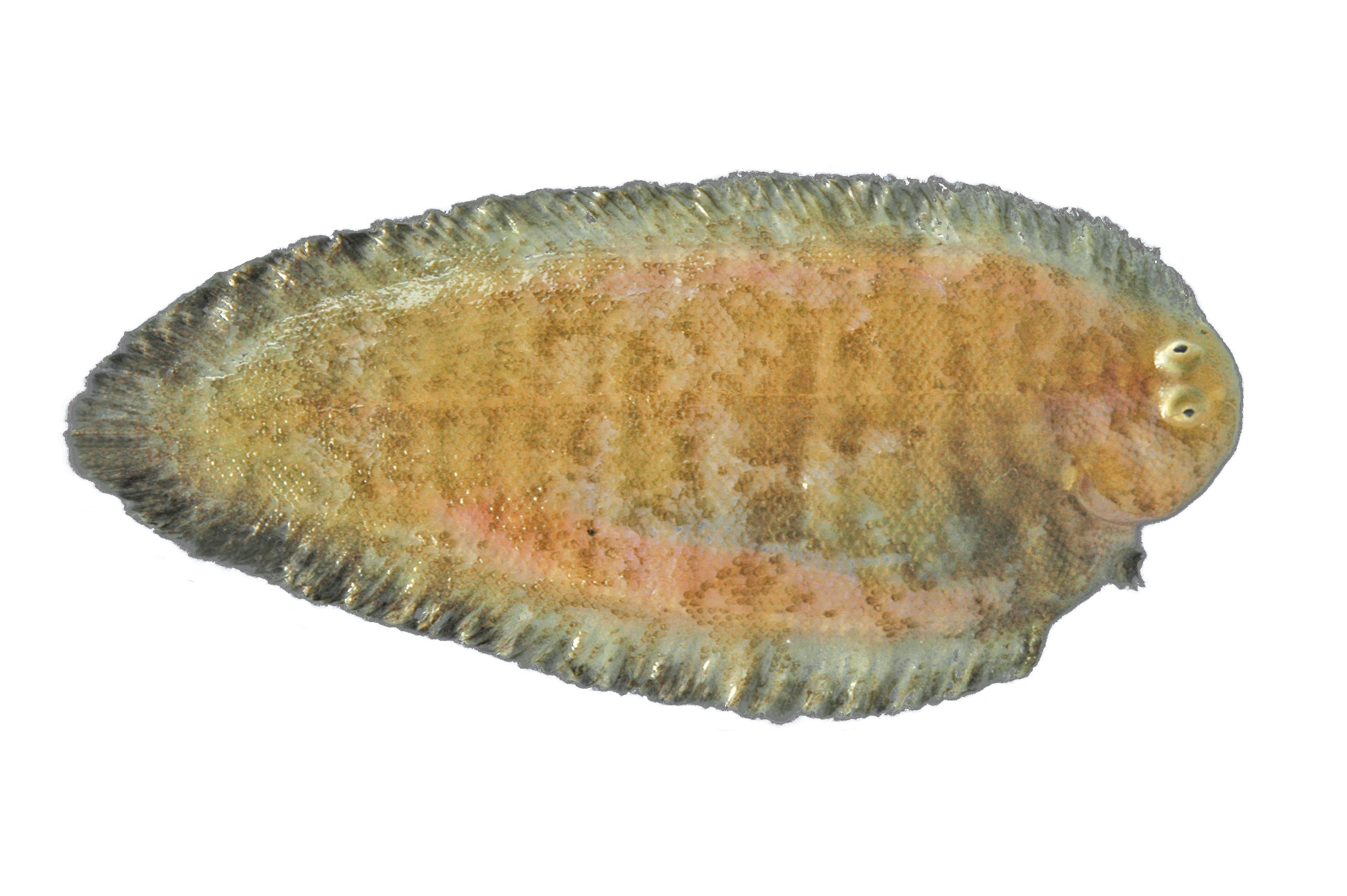- Classification
- ACTINOPTERYGII
- PLEURONECTIFORMES
- SOLEIDAE
- Zebrias
- penescalaris
Duskybanded Sole, Zebrias penescalaris Gomon 1987

A Duskybanded Sole, Zebrias penescalaris, from Spencer Gulf, May 2005. Source: Dianne J. Bray / Museum Victoria. License: CC by Attribution-NonCommercial
Summary:
A brownish sole with 16-22 slightly darker almost parallel bands across the body and caudal-fin base, bands of equal width or slightly narrower than paler interspaces and difficult to distinguish from interspaces; blind side pale. The dorsal and anal fins are dusky to dark with a narrow pale margin on both sides.
Cite this page as:
Bray, D.J. 2017, Zebrias penescalaris in Fishes of Australia, accessed 02 Jul 2025, https://fishesofaustralia.net.au/home/species/1017
Duskybanded Sole, Zebrias penescalaris Gomon 1987
More Info
|
Distribution |
Endemic to southern Australia from Kangaroo Island and the Gulf St Vincent, South Australia, to Albany, Western Australia. |
|
Features |
Dorsal fin 70-80; Anal fin 60-67; Caudal fin 15-16; Pectoral fin 6-7; Pelvic fin 4; Lateral line scales 67-76. Body of moderate depth (36-40% SL), extremely compressed, of moderate length. Head small (17-22% SL); eyes on right side of head, small (17-26% HL), separated by narrow scaly space; snout produced slightly downward in front of mouth; mouth small (upper jaw length 28-33% HL), strongly curved; teeth tiny, in band only on blind side of each jaw; numerous small cirri anteriorly on blind side of head, reaching posteriorly only slightly past mouth; opercular margins edged with cirri, especially well developed on blind side. Scales very small, ctenoid on both sides, moderately firmly attached, covering all of head not covered by cirri; lateral line on both sides of body, nearly straight along centres of sides, curving upwards and forwards from back to front of head. Dorsal, anal and caudal fins broadly interconnected by membranes; dorsal fin arising above anterior rim of upper eye, without elongate anterior rays; caudal fin rounded. Pectoral fins very small, connected to opercular membranes, similar to one another in size and form. Pelvic fins with short bases, originating near anterior extent of chest, not attached to anal fin. |
|
Size |
Reaches a length of 150 mm. |
|
Colour |
Eyed side dusky with 16-22 faintly darker parallel bands crossing body and base of caudal fin, bands of equal breadth or slightly narrower than interspaces and difficult to distinguish from interspaces; blind side pale. Dorsal and anal fins dusky to dark with narrow pale margins on both sides. |
|
Fisheries |
Taken as by-catch in commercial prawn trawls. |
|
Similar Species |
The Duskybanded Sole, Zebrias penescalaris differs from the similar Manyband Sole, Zebrias scalaris, in having fewer lateral-line scales (67-76, vs 79-86 in the Z. scalaris, one specimen with 74 scales), generally fewer dorsal-fin rays (70-76, vs 75-82 in Z. scalaris, one specimen of Z. penscalaris with 80 scales), and less definition in the body banding. |
|
Etymology |
The specific name penescalaris is from the Latin pene (= almost or near) and scalaris (= of a ladder) in reference to the close relationship of this species to the Manyband Sole, Zebrias scalaris. |
|
Species Citation |
Zebrias penescalaris Gomon 1987, Mem. Mus. Vict. 48(1): 21. Type locality: Anxious Bay, South Australia, 33°28'S, 134°48'E, depth 30 fathoms. |
|
Author |
Bray, D.J. 2017 |
|
Resources |
Duskybanded Sole, Zebrias penescalaris Gomon 1987
References
Gomon, M.F. 1987. New Australian Fishes. Part 6. New species of Lepidotrigla (Triglidae), Choerodon(Labridae) and Zebrias (Soleidae). Memoirs of Museum Victoria 48(1): 17-23 fig. 1. DOI https://doi.org/10.24199/j.mmv.1987.48.06 Open access
Gomon, M.F. 1994. Family Soleidae. pp. 860-865, figs 761-763 in Gomon, M.F., Glover, C.J.M. & Kuiter, R.H. (eds). The Fishes of Australia's South Coast. Adelaide : State Printer 992 pp. 810 figs.
Gomon, M.F. 2008. Family Soleidae. pp. 817-821 in Gomon, M.F., Bray, D.J. & Kuiter, R.H. (eds). Fishes of Australia's Southern Coast. Sydney : Reed New Holland 928 pp.
Kuiter, R.H. 1993. Coastal Fishes of South-eastern Australia. Bathurst : Crawford House Press 437 pp.

